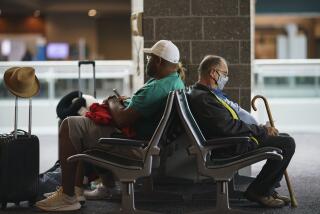Cabin Fever
- Share via
I have been a flight attendant for 33 years. I would like to comment on Patti Laursen’s letter (March 23), pertaining to “Just How Sick Are You Going To Get When You Fly?”
Laursen’s doctor was correct in his assumption that upper respiratory infections are commonplace among those of us who fly in stuffy airplanes.
International flights are more infectious than domestic, in part because more people are enclosed for a longer period of time. People become more tired, and their resistance is lower. International passengers bring germs to an airplane that other passengers have not had ability to build up a resistance to. Smoking on certain international flights can cause enough of an irritant to initiate an upper respiratory infection.
The above mentioned factors are mainly unavoidable. However, we also face the problem of the airlines trying to save fuel and lower costs. Low flow air-conditioning uses less fuel than high flow. Low flow is the norm. Some airplanes have either three or four air-conditioning units called “air-pacs.” Many times an air-pac will be inoperative. In order to avoid mechanical delays, the plane is dispatched with one-fourth to one-half of the air system not working.
The Assn. of Flight Attendants has lobbied hard to have smoking removed from all airplanes. We are working equally as hard to have better air circulation.
JO-ANNE COLLINS
Assn. of Flight Attendants
More to Read
Sign up for The Wild
We’ll help you find the best places to hike, bike and run, as well as the perfect silent spots for meditation and yoga.
You may occasionally receive promotional content from the Los Angeles Times.






